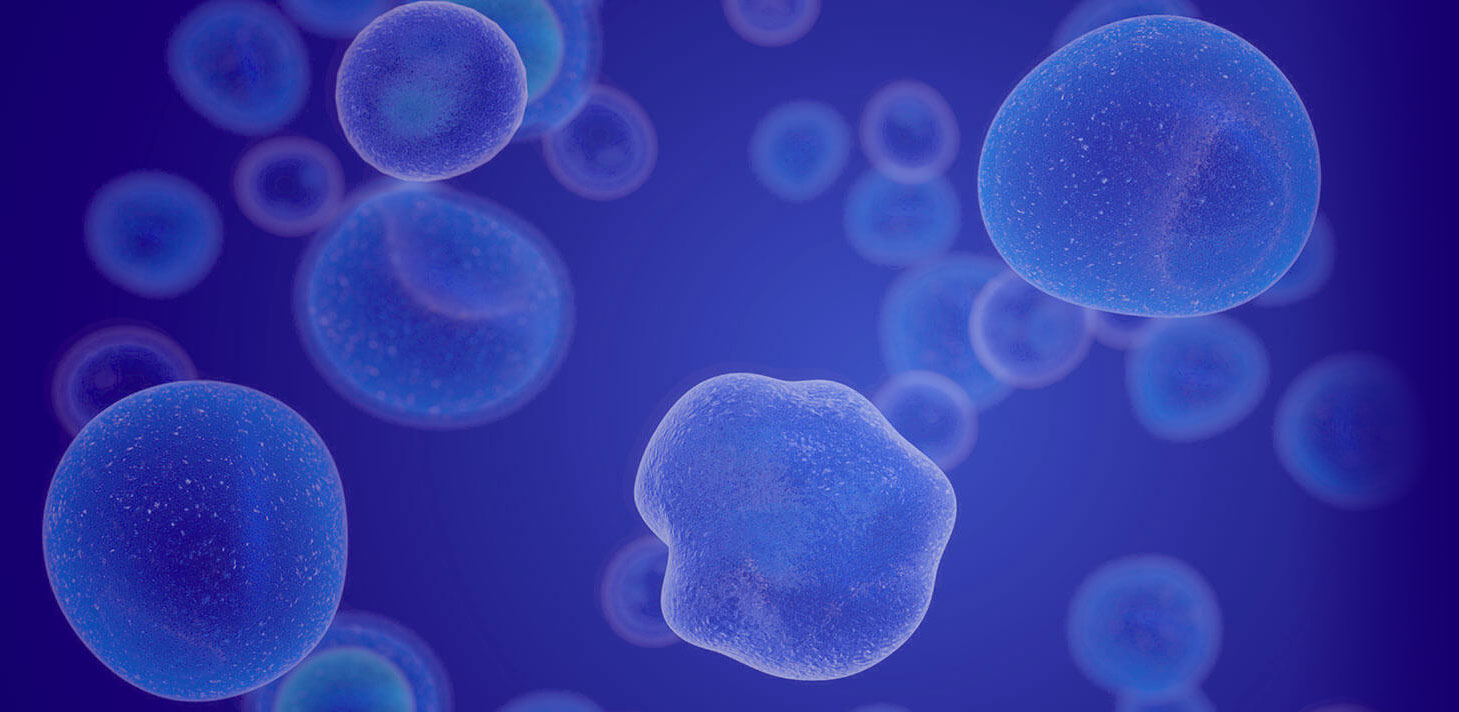Orthopedic Injuries
Conveniently located to serve the areas of Greenville, SC, Spartanburg, SC, Columbia, SC, Anderson, SC and Asheville, NC

Treatment of orthopedic injuries is one of the most effective uses of stem cells. By introducing stem cells and progenitor cells to damaged connective tissue, the body can heal ligaments, tendons, and other damaged tissues that would have otherwise been a lifelong issue. Musculoskeletal and orthopedic complications are some of the most frustrating conditions a patient can face. Chronic pain in joints and limbs makes daily activities complex and can even hinder beloved hobbies.
No one deserves to live with pain when there are options available, and you should not have to halt your activities because of orthopedic injuries. Stem cell treatments have proven their efficacy for tissue regrowth, and you can benefit.
Dr. John C. Haasis III is the founder and medical director of Daisy Stem Cell Therapy and Advanced Regenerative Medicine Centers of the Carolinas. He is committed to finding solutions for patients’ pain so they can live better, longer, happier lives. If you have an orthopedic condition that has shown no other improvement and you want to avoid surgeries, then do not wait to schedule an appointment with Dr. Haasis and his team. Stem cell treatments may be exactly what you need to overcome your joint pain burdens. If you have any further questions about treatment, please call one of our offices in North or South Carolina at (864) 775-5682 and speak with one of our specialists.
Contents
About Stem Cells
Recent interest and research into stem cell treatments have led to some remarkable advancements in medicine. Injecting these cells to treat orthopedic injuries has shown to be an effective treatment in many cases; addressing problems that have plagued patients for decades that no other doctors have been able to correct. Stem cells and progenitor cells are generalized, all-purpose, “specialized” cells that naturally occur in the body. They can adapt to fill the role of a cell in any tissue and can replicate themselves through mitosis. (1) Stem cells contain a loose mixture of different DNA sequences. When the body sends a signal into the cell to begin the differentiation process (the process of specializing the cell to a certain role), the cell will eliminate some sequences and retain others; essentially transforming itself into the required cell type. (1)
The following respond tremendously well to stem cell treatments:
Issues in tendons, ligaments, cartilage, epimysium (silverskin), meniscus, and more can evolve into serious complications like arthritis and bone defects if left untreated. Many athletes suffer injuries to their musculoskeletal system that could require surgery to correct. As existing cells in the tissue reproduce, they are unable to correct the injury that has occurred. By injecting stem cells into the tissue, proper healing is put back on track and the tissue can return to its original function. (2)
Stem cells are one of the most promising new developments in medicine. The ability to regenerate healthy tissues by adding multipurpose cells has shown applications in disease research, cancer treatments, cognitive decline prevention, and even organ regrowth.
Benefits
Using stem cells to treat orthopedic injuries presents patients with many benefits. One of the biggest is that they often negate the need for surgical procedures. Common orthopedic issues like carpal tunnel syndrome, torn ligaments, rotator cuff strains, and more are well-known for the complex surgeries required to fix them. Stem cell injections can bypass this process entirely and help the patient heal naturally through cell proliferation.
Additionally, a non-invasive procedure like this means that there is virtually no recovery required. While adapting to a pain-free life may require some habit forming; complications like swelling, bruising, infections, and follow-up treatments like physical therapy may not be necessary. Promoting natural healing means promoting a simple, natural recovery. Stem cells also offer a cost-effective solution. While the initial cost may be slightly more than prescription medications and/or surgery, stem cells can ensure long-term results without the risk of surgical complications.
Candidates
If you have an orthopedic injury, you can receive a stem cell treatment at the Daisy Stem Cell Therapy. Before pursuing this route, we recommend that you speak with your primary care physician about your condition. Some orthopedic injuries respond very well to simple therapies. If your injury is more significant or has not shown any improvement over time through rest, compression, medication, or physical therapies, then you may be an ideal candidate. Due to the quick recovery time and non-invasive treatment, stem cell healing has great potential for athletes at professional, amateur, and hobby levels. (3) Opting for a simple treatment that does not create further medical hurdles allows them to get back to the sports they love much faster.
If you have questions about your candidacy or stem cell treatments in general, the best way to get the information you need is to schedule a meeting with Dr. Haasis.
Personal Consultation

When you discuss your potential stem cell treatments with Dr. Haasis, it is important to explain the history of your orthopedic injury or injuries. Whether it is a freshly torn ACL or decades-old arthritis, understanding the timeline of your condition is important to create an effective treatment plan. Older and more complex injuries may require more injections than new, minor injuries. Dr. Haasis will also review your medical history and general health to estimate how well your body will receive the stem cells. Patients rarely have adverse reactions. We recommend keeping a list of questions to discuss with Dr. Haasis. Whatever your ailment may be, you can have confidence knowing that Dr. Haasis is one of the nation’s leading experts in stem cell treatments, and you can see an improvement in your pain.
Procedure, Monitoring, Recovery, and Results
One of the biggest benefits of treating orthopedic injuries with stem cells is that it avoids complex surgeries. When you arrive at your appointment, Dr. Haasis will inject your injured tissues with stem cells. The number of injections necessary and the total amount of stem cells injected will depend on the severity and scale of the injury. Once you receive your injections from Dr. Haasis, you will be able to continue with your day as normal.
As the new stem cells target the injury and promote healing, it is important to monitor the progress. Some swelling may occur, but this is a result of the natural healing process, not a reaction to the cells. We recommend keeping a log of how your pain and functioning improve. You will also be monitored by Dr. Haasis and his team at regular follow-up appointments. As your orthopedic injury heals, you will experience less pain and see increased movement and ability. We do recommend easing back into regular use of the area after it heals; for example, if you receive stem cells for a wrist injury, do not immediately lift heavy weights. However, you will be able to resume all of your normal activities as strength is rebuilt and muscle memory returns.
Cost of Stem Cell Treatments for Orthopedic Injuries in North and South Carolina
The world of stem cell healing is vast, so no two treatment plans will be the same. Your specific stem cell regimen will vary in the number of cells required, how many and how frequently you will receive injections, the scale of your orthopedic injuries, how old your injuries are, where the injuries are, and more. The best way to receive an accurate cost estimate for your stem cell plan is to schedule a consultation with Dr. Haasis at Daisy Stem Cell Therapy by calling (864) 775-5682.
FAQ
Are stem cells safe?
Stem cell treatments are very safe. Some of the only complications seen by patients are soreness and swelling from the natural healing process and occasional small bleeding at the injection site, similar to that of a flu shot.
How effective are stem cells?
Stem cells are extremely effective at improving function after orthopedic injury. Many patients have seen improvements in long-term afflictions that have not shown any improvement across decades of physical therapy, medications, compression, and more. Stem cells have also had success in treating cognitive decline, cancers, and birth defects.
How do stem cells work?
There is a lot of complex medical science that explains the function of stem cells, but in short, stem cells are unspecified cells that can adapt to fill any role. When they are placed into injured tissue, they alter their cellular DNA to match that of the existing tissue. They then replace the damaged cells and replicate themselves to create new, healthy, normal-functioning tissue.
What makes stem cells ideal for orthopedic injuries?
Stem cells are the ideal treatment for orthopedic injuries because they avoid invasive surgeries and promote natural healing in the body. While orthopedic surgeries can be beneficial, they often do more harm than good and create further complications to joints, bones, ligaments, and muscles. Stem cell treatments bypass this entirely and allow the body to create new, healthy cells in the afflicted areas.
References
- Zakrzewski W, Dobrzyński M, Szymonowicz M, Rybak Z. Stem cells: past, present, and future. Stem Cell Research & Therapy. 2019;10(1). https://stemcellres.biomedcentral.com/articles/10.1186/s13287-019-1165-5
- Akpancar S, Tatar O, Turgut H, Akyildiz F, Ekinci S. The Current Perspectives of Stem Cell Therapy in Orthopedic Surgery. Archives of Trauma Research. 2016;5(4). doi:https://doi.org/10.5812/atr.37976
- Stewart CE. Stem cells and regenerative medicine in sport science. Emerging Topics in Life Sciences. 2021;5(4):563-573. doi:https://doi.org/10.1042/etls20210014


